- Address
- STTARR Innovation Centre
-
101 College Street, 7th floor
MaRS Building - East Tower - Princess Margaret Cancer Research Tower
- Toronto, Ontario
- M5G 1L7
- Contact
- (+1) 416-581-7771
- sttarr.general@uhn.ca
Spatio-Temporal Targeting and Amplification of Radiation Response
What do we do? STTARR is at the forefront of preclinical imaging and translational research, offering a comprehensive suite of services to support cutting-edge studies in various medical fields. By integrating products, imaging technologies, and expert services, STTARR helps accelerate research and development across oncology, cardiology, metabolic diseases, radiotheranostics and more.
STTARR's expertise spans from initial study design to final data analysis, including GLP-compliant histopathology services. STTARR fosters collaboration with biotechnology, radiopharmaceutical companies and academic scientists to not only advance scientific discovery but also support innovation and efficiency in research.
To access our equipment and services, user registration is required; please refer to our manual for a detailed guide on how to create a new user account.
Please contact us at sttarr.general@uhn.ca to learn more about our services.
Research Space
Years of Experience
Projects
Researchers Working with STTARR
Multimodal in vivo imaging in small and large animal models
If your isotope or tracer is not mentioned, please talk to us!
The STTARR's histopathology core now provides 100+ optimized antibodies for immunohistochemistry/immunofluorescence. The histopathology core now specializes in the special MOVAT stain (highlights the various constituents of connective tissue, especially cardiovascular tissue, by five colors in a single stained slide). The new development of an in-situ hybridization protocol combined with immunofluorescence or human X-Y chromosome assays is now a histopathology service offered at STTARR.
Services include:
Inspect the samples for fixation statues, trimming harvest tissue to the plain of interest.
Regular cassettes size is 30mm x 35mm.
Supersize cassette for wholemount is 65mmX50mm.
Melt down paraffin block and re-orient the tissue into the desire cutting plain.
Sectioning OCT frozen tissue blocks prepared by users.
User provide fresh harvested tissue to STTARR Histopathology for snap freezing in OCT.
Special snap freezing technique for muscle tissue prone to freeze artifact.
Sectioning paraffin and frozen section at routine 4um thickness or in special thickness requested by user.
Regular slides: 25mmx75mm.
Wholemount large slide:50mmx75mm.
Paraffin or frozen (per slide) consecutive sections from a ribbon of section mounted on slides labelled with numbers.
Look for specific microscopic structures in paraffin/frozen blocks and take sections eg. Mouse aortic arch, aortic root, mouse embryo thyroid glands.
Optimization of commercial and/or in house produced antibodies.
Check out our Histopathology Optimized Antibody List for a list of antibodies currently available and optimized at STTARR Histopathology. Please note that the list is continuously updated. If the antibody you are interested in is not on the list, please contact us.
We also offer validated antibodies for immunohistochemistry staining on porcine tissue.
Multiplex of up to 3 target proteins in cells/tissues using fluorescent tagged antibodies.
Detection of DNA fragmentation in last phase of apoptosis (cell death).
Uitlizing ACDBio System probes and detection systems to detect target mRNA in paraffin embedded sections.
Masson trichrome, Elastic Trichrome, Picrosirius
red,Periodic acid Schiff, Cresyl echt violet, Luxol fast
blue, Gram stain, von Kossa calcium, Oil O red, Gordon &
Sweets Siliver Reticular fiberstain, Safranin O, MOVAT,
Prussian blue, Fontana Masson and fast green,
TRAP(Tartaric Acid Resistant Phosphotase).
STTARR Histopathology has other histochemistry stain
protocols that are available upon request, please inquire
if the stain that you are interested is not on the list.
Principle and routine stain used in histopathology perform on paraffin or frozen sections.
Sectioning thick sections (3--50microns) for autoradiography, 2 sets of slides each sample. Protocol on sample preparation for autoradiography available upon request.
Centrifuge cell pellet and double embed into agar gel and paraffin.
Formic acid for rapid decalcification or EDTA for tissue to be used for IHC.
Havest tissue for toxicology study or specific organ of interest.
Combining multiple donor tissue parrafin blocks into one for high throughput IHC staining.
Scientific consulting & project management, workshops, user training and facility tours available
For more information on Internal and External rates, please contact us or Naz Chaudary.
The STTARR's histopathology core now provides 100+ optimized antibodies for immunohistochemistry/immunofluorescence. The histopathology core now specializes in the special MOVAT stain (highlights the various constituents of connective tissue, especially cardiovascular tissue, by five colors in a single stained slide). The new development of an in-situ hybridization protocol combined with immunofluorescence or human X-Y chromosome assays is now a histopathology service offered at STTARR.
Hematoxylin and eosin staining on a lung tissue
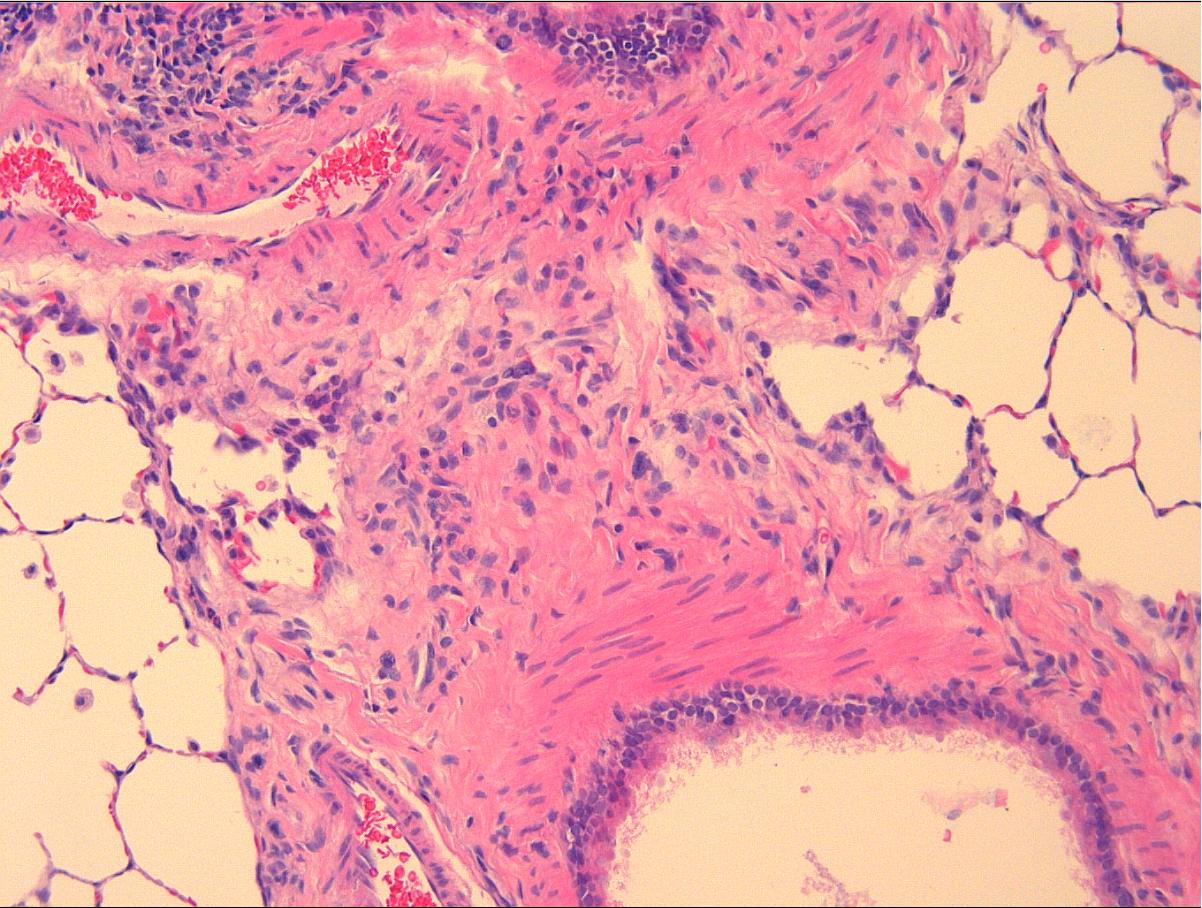
Kidney tubules marker stained by IF
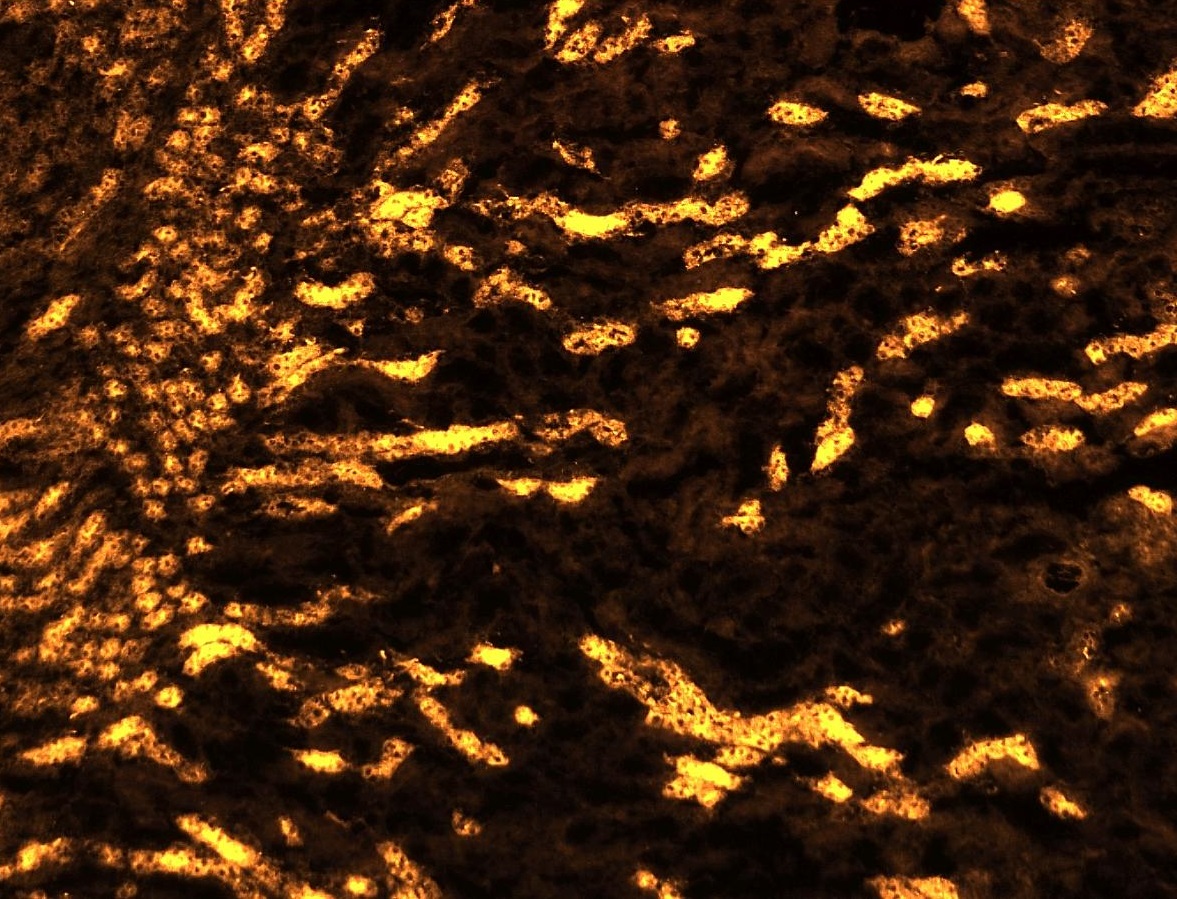
CA9 IHC for hypoxia screening
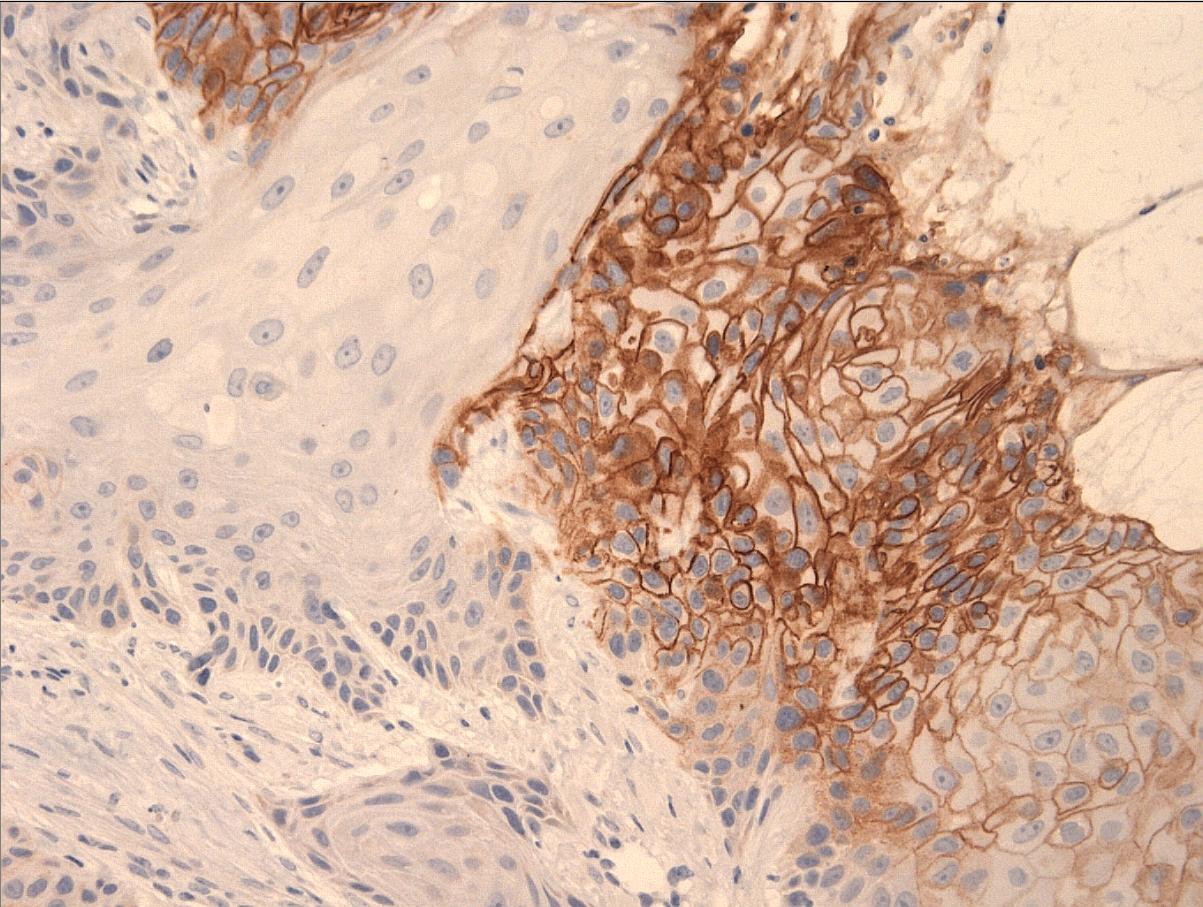
Movat pentachrome
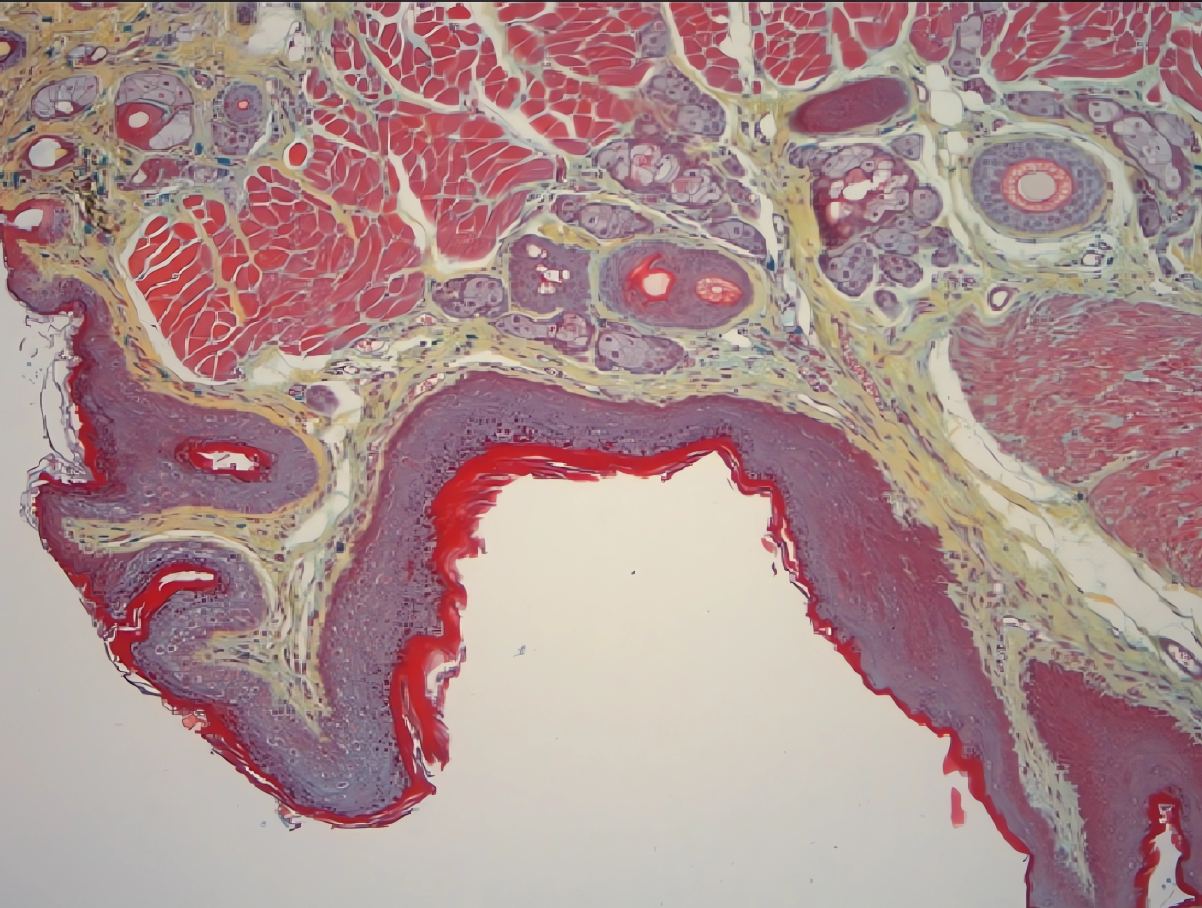
Services include:
Inspect the samples for fixation statues, trimming harvest tissue to the plain of interest.
Regular cassettes size is 30mm x 35mm.
Supersize cassette for wholemount is 65mmX50mm.
Melt down paraffin block and re-orient the tissue into the desire cutting plain.
Sectioning OCT frozen tissue blocks prepared by users.
User provide fresh harvested tissue to STTARR Histopathology for snap freezing in OCT.
Special snap freezing technique for muscle tissue prone to freeze artifact.
Sectioning paraffin and frozen section at routine 4um thickness or in special thickness requested by user.
Regular slides: 25mmx75mm.
Wholemount large slide:50mmx75mm.
Paraffin or frozen (per slide) consecutive sections from a ribbon of section mounted on slides labelled with numbers.
Look for specific microscopic structures in paraffin/frozen blocks and take sections eg. Mouse aortic arch, aortic root, mouse embryo thyroid glands.
Optimization of commercial and/or in house produced antibodies.
Check out our Histopathology Optimized Antibody List for a list of antibodies currently available and optimized at STTARR Histopathology. Please note that the list is continuously updated. If the antibody you are interested in is not on the list, please contact us.
We also offer validated antibodies for immunohistochemistry staining on porcine tissue.
Multiplex of up to 3 target proteins in cells/tissues using fluorescent tagged antibodies.
Detection of DNA fragmentation in last phase of apoptosis (cell death).
Uitlizing ACDBio System probes and detection systems to detect target mRNA in paraffin embedded sections.
Masson trichrome, Elastic Trichrome, Picrosirius red,Periodic
acid Schiff, Cresyl echt violet, Luxol fast blue, Gram stain,
von Kossa calcium, Oil O red, Gordon & Sweets Siliver
Reticular fiberstain, Safranin O, MOVAT, Prussian blue,
Fontana Masson and fast green, TRAP(Tartaric Acid Resistant
Phosphotase).
STTARR Histopathology has other histochemistry stain protocols
that are available upon request, please inquire if the stain
that you are interested is not on the list.
Principle and routine stain used in histopathology perform on paraffin or frozen sections.
Sectioning thick sections (3--50microns) for autoradiography, 2 sets of slides each sample. Protocol on sample preparation for autoradiography available upon request.
Centrifuge cell pellet and double embed into agar gel and paraffin.
Formic acid for rapid decalcification or EDTA for tissue to be used for IHC.
Havest tissue for toxicology study or specific organ of interest.
Combining multiple donor tissue parrafin blocks into one for high throughput IHC staining.
Our equipment is designed to facilitate multidisciplinary collaborations.
The nuclear medicine modalities of PET (Positron Emission Tomography) and SPECT (Single Photon Emission Computed Tomography) rely on injection (or sometimes inhalation) of a radioactive tracer. Nuclear medicine and molecular imaging techniques provide unique insight into the visualization, characterization, and measurement of biological processes at the molecular and cellular levels.
PET is a nuclear medicine imaging modality that detects the emissions of radiolabelled tracers. As positron-emitting isotopes decay, positrons interact with electrons in the subject. When a positron and electron interact, an annihilation event occurs in which the mass of these subatomic particles is converted into energy (E = mc2) in the form of two 511 keV gamma rays emitted at 180° apart from each other. These gamma ray pairs, resulting from annihilation events, are what is detected by the PET scanner.
SPECT is an imaging technique based on the detection of gamma rays emitted by radioactive tracers. The scanner consists of four gamma camera heads (scintillating sodium iodide crystals doped with thallium) with pinhole collimators that rotate around the subject. The SPECT computer reconstructs a 3-D tomographic image from the acquisition of 2-D images at multiple angles (projections). Isotopes useful for SPECT imaging emit gamma rays with energies between ~25 - 250 keV. They are high atomic number metals commonly used to label molecules of biological significance.
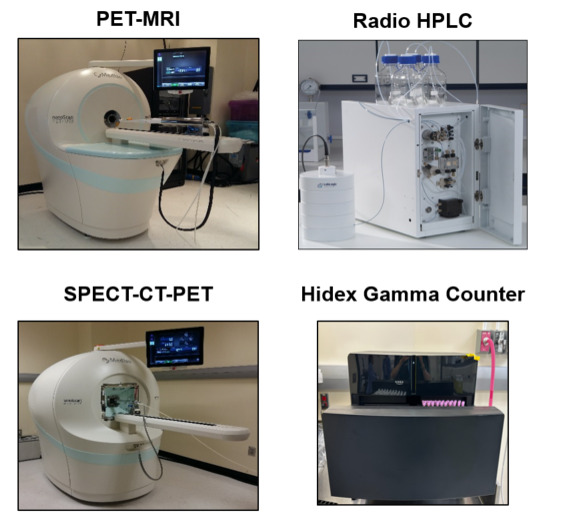
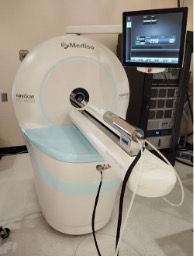
Hidex Gamma counter is ideal for nuclear medicine and PET applications, with precise onboard balance, samples can automatically be weighed for preclinical biodistribution studies. It can count up to 230 samples that are 13mm in diameter and 72 samples at 28mm in diameter. It is a compact system with lead shielding to minimize interference as well as detects energies from 15-2000KeV.
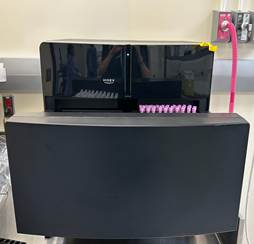
This compact HPLC system not only has a UV-Vis detector, but also a NaI scintillation detector for characterizing and quantifying radioligands. It is sensitive enough to read low amounts of radioactivity over a wide range of energies and allows the delivery of up to 4 solvents allowing for maximum flexibility. Using the Laura software, the researcher can create and edit methods, set up sample runs, and view data collection in real time.
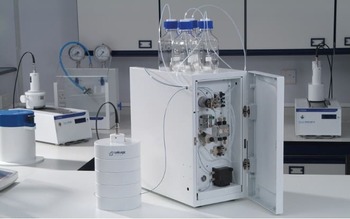
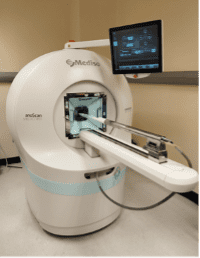
STTARR has installed the new SmART+ system, the small animal irradiator at PMCRT in Nov. 2022.
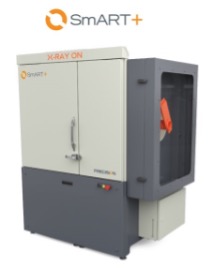
CT (Computed Tomography) combines a series of x-ray images taken from different angles around the subject or animal. Taking advantage of the differences in the x-ray attenuation properties of the various tissues and organs, computer processing creates cross-sectional images (slices) of the internal structures.
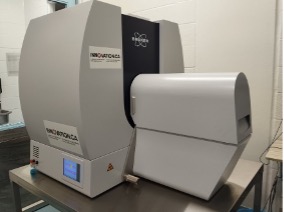
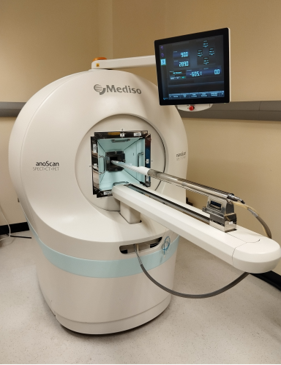
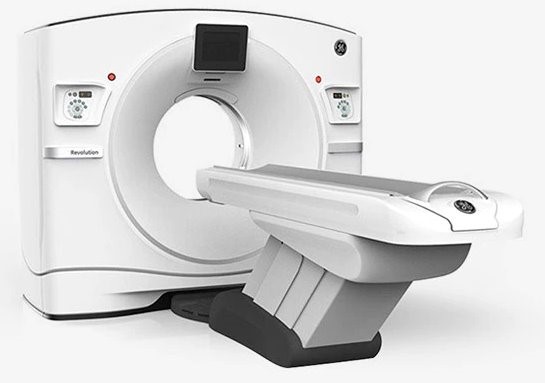
A MRI (Magnetic Resonance Imaging) scan uses the magnetization from water protons to generate images in which brightness can reflect not only the density of water protons in tissue but also the interaction of water protons with their local microenvironment. These images provide an unparalleled soft tissue contrast, enabling both anatomic and functional imaging for monitoring tumor growth and response to therapies.
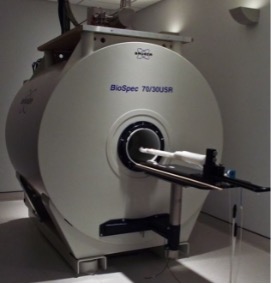
** The Bruker 7T MRI is now upgraded as of Spring 2023, to the NEO architecture running ParaVision 360, which will provide safer operation, higher throughput imaging, longer hardware lifetimes, and best-in-class fast imaging.
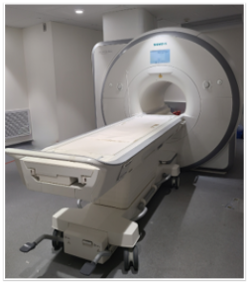
Fluorescence and Bioluminesence imaging techniques.
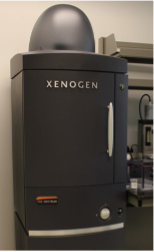
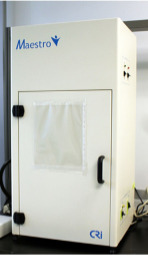
Real-time images are generated by applying high-frequency sound and then detecting the returning sound waves (echoes) caused by differences in acoustic impedence of the various tissue interfaces within the subject of interest. In addition to 2D B-mode images, anatomical 3D images of a small region can also be obtained. If the ultrasound beam is directed into a blood vessel, the blood flow gradient can be measured by a technique known as the Doppler effect. Visualization of blood flow can be further enhanced by the use of acoustic contrast agents such as microbubbles.
The photoacoustic (PA) effect refers to the generation of acoustic waves from an object being illuminated by pulsed or modulated electromagnetic (EM) radiation, including optical waves. The fundamental principle of the PA effect is based on the thermal expansion resulting from the absorption of EM radiation. The thermal expansion increases the acoustic pressure in the medium. Pulsing or modulating the EM radiation generates an acoustic wave which can be detected using an ultrasound transducer.
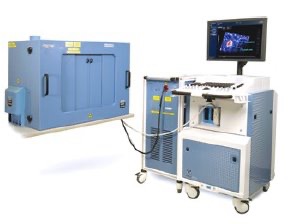
STTARR provides pre-clinical image analysis software through a variety of workstations that you can use autonomously or with STTARR staff assistance.
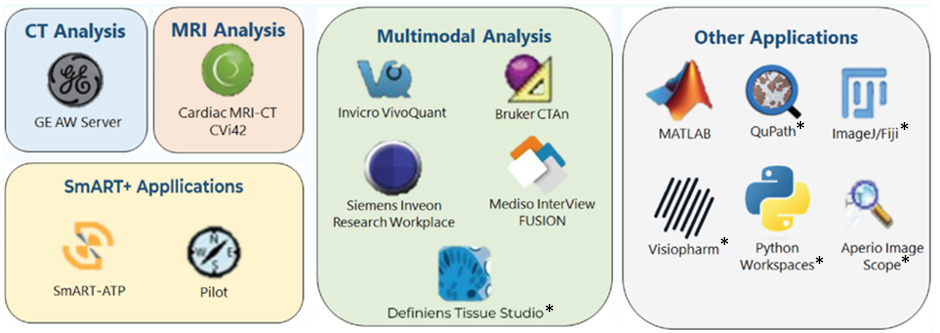
Note: Software marked with an asterisk (*) do not have staff support available. For software without the asterisk, our staff is available to assist you.
We kindly request for authors who use STTARR resources to include
the following acknowledgement in their publication:
“The authors would like to acknowledge the Spatio-Temporal Targeting
and Amplification of Radiation Response (STTARR) program and its
affiliated funding agencies.”
Select a year to see a listing of articles published.
The STTARR Innovation Centre is located at:
101 College Street, 7th floor
MaRS Building - East Tower
Princess Margaret Cancer Research Tower
Toronto, Ontario, M5G 1L7
Canada
(+1) 416-581-7771
sttarr.general@uhn.ca
www.sttarr.ca
https://x.com/CoresUhn
https://www.linkedin.com/in/sttarr-innovation-centre
STTARR is accessible to researchers from any organization. To discuss your project requirements, please contact us. If you're looking to initiate a new project or add new users/resources to an existing STTARR number, please fill out our Facility Access Request Form. To access this link, users need an account on Stratocore. If you're a new user, you can set up an account through this link.
Please contact us for a free consultation to discuss your research needs with a member of our expert team. Meeting and discussing your research and goals is the best way for us to ensure the right technology and/or equipment is applied to your project.
Stratocore PPMS (Pasteur Platform Management System) is a web-based, management software system that increases the administrative efficiency of Core facilities while providing researchers an easy way to reserve instruments, request training, and request services.